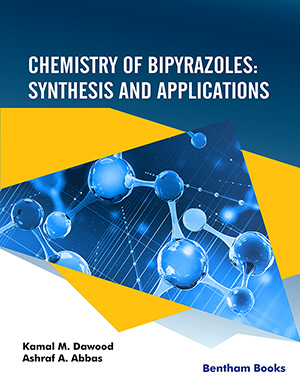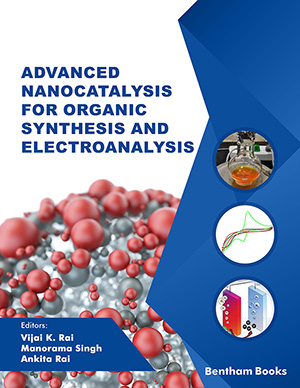
Abstract
Nanomaterial drug delivery systems are promising vehicles to improve chemotherapy and decrease side effects. In the last years, there have been more reports published in prestigious journals addressing the successful application of magnetite nanoparticles in tumors treatment. The antitumor effect of magnetic fluids was studied intensely by applying an external magnetic field to retain the nanoparticles in the tumor tissue, and also to help regulating the release of loaded drugs. These features make them more competitive as a drug carrier than other nanomaterials. In addition, the MRI (magnetic resonance imaging) property of magnetic nanomaterials can enhance the monitoring of drug carriers locations. In all cases, the tumor significantly regressed in size and the microscopic exam revealed that the tumor cells massively endocytosed magnetic nanoparticles and entered in lysis process. Although the functionalization of nanoparticles generally refers to the addition of a polar shell to increase their solubility on the human body liquids, we have demonstrated that nanomaterials based magnetite functionalized with different types of fatty acids could exhibit antitumor properties without applying any external alternating magnetic field, when tested in vitro, on HEp–2 cells.
Keywords: Fatty acids, anti–tumor, cancer therapy, core@shell, nanofluids.
Current Organic Chemistry
Title:Antitumor Activity of Magnetite Nanoparticles: Influence of Hydrocarbonated Chain of Saturated Aliphatic Monocarboxylic Acids
Volume: 17 Issue: 8
Author(s): Georgeta Voicu, Ecaterina Andronescu, Alexandru Mihai Grumezescu, Keng-Shiang Huang, Anton Ficai, Chih-Hui Yang, Coralia Bleotu and Mariana Carmen Chifiriuc
Affiliation:
Keywords: Fatty acids, anti–tumor, cancer therapy, core@shell, nanofluids.
Abstract: Nanomaterial drug delivery systems are promising vehicles to improve chemotherapy and decrease side effects. In the last years, there have been more reports published in prestigious journals addressing the successful application of magnetite nanoparticles in tumors treatment. The antitumor effect of magnetic fluids was studied intensely by applying an external magnetic field to retain the nanoparticles in the tumor tissue, and also to help regulating the release of loaded drugs. These features make them more competitive as a drug carrier than other nanomaterials. In addition, the MRI (magnetic resonance imaging) property of magnetic nanomaterials can enhance the monitoring of drug carriers locations. In all cases, the tumor significantly regressed in size and the microscopic exam revealed that the tumor cells massively endocytosed magnetic nanoparticles and entered in lysis process. Although the functionalization of nanoparticles generally refers to the addition of a polar shell to increase their solubility on the human body liquids, we have demonstrated that nanomaterials based magnetite functionalized with different types of fatty acids could exhibit antitumor properties without applying any external alternating magnetic field, when tested in vitro, on HEp–2 cells.
Export Options
About this article
Cite this article as:
Voicu Georgeta, Andronescu Ecaterina, Grumezescu Alexandru Mihai, Huang Keng-Shiang, Ficai Anton, Yang Chih-Hui, Bleotu Coralia and Chifiriuc Mariana Carmen, Antitumor Activity of Magnetite Nanoparticles: Influence of Hydrocarbonated Chain of Saturated Aliphatic Monocarboxylic Acids, Current Organic Chemistry 2013; 17 (8) . https://dx.doi.org/10.2174/1385272811317080008
| DOI https://dx.doi.org/10.2174/1385272811317080008 |
Print ISSN 1385-2728 |
| Publisher Name Bentham Science Publisher |
Online ISSN 1875-5348 |
Call for Papers in Thematic Issues
Catalytic C-H bond activation as a tool for functionalization of heterocycles
The major topic is the functionalization of heterocycles through catalyzed C-H bond activation. The strategies based on C-H activation not only provide straightforward formation of C-C or C-X bonds but, more importantly, allow for the avoidance of pre-functionalization of one or two of the cross-coupling partners. The beneficial impact of ...read more
Electrochemical C-X bond formation
Conventional methods for carrying out carbon–X bond formation are typically conducted at harsh reaction conditions, and rely on expensive catalysts as well as the use of stoichiometric, and perhaps toxic, oxidants. In this regard, electrochemical synthesis has recently been recognized as a sustainable and scalable strategy for the construction of ...read more
From Lab Bench to Algorithm: The Future of Organic Chemistry Powered by AI
Organic chemistry, with its intricate dance of molecules and reactions, is undergoing a transformation fuelled by the power of Artificial Intelligence (AI) and Machine Learning (ML). The integration of AI/ML with Organic Chemistry is revolutionizing the field by enhancing the efficiency and accuracy of chemical research and development. These technologies ...read more
N-Heterocyclics: Synthesis, Computational Studies, and Coordination Chemistry - A synthetic perspective
N-heterocycles, such as phenanthroline, quinoline, or their organometallic complexes, are widely used in a variety of fields, including chemistry, biochemistry, and coordination chemistry. They play a key role in many chemical and biological processes as biological ligands, medicinal agents, catalysts in organic synthesis, molecular probes and sensors, as well as ...read more
Related Journals
 14
14
- Author Guidelines
- Graphical Abstracts
- Fabricating and Stating False Information
- Research Misconduct
- Post Publication Discussions and Corrections
- Publishing Ethics and Rectitude
- Increase Visibility of Your Article
- Archiving Policies
- Peer Review Workflow
- Order Your Article Before Print
- Promote Your Article
- Manuscript Transfer Facility
- Editorial Policies
- Allegations from Whistleblowers
- Announcements
Related Articles
-
Sulfur Dioxide: a Novel Gaseous Signal in the Regulation of Cardiovascular Functions
Mini-Reviews in Medicinal Chemistry Retrospective, Observation Study: Quantitative and Qualitative Effect of Ezetimibe and HMG-CoA Reductase Inhibitors on LDL-Cholesterol: Are There Disappearance Thresholds for Small, Dense LDL and IDL?
Recent Patents on Cardiovascular Drug Discovery Primary Prevention of Ischaemic Stroke in Atrial Fibrillation: New Oral Anticoagulant Drugs for all?
Current Vascular Pharmacology Biofilms in Skin Infections: Propionibacterium acnes and Acne Vulgaris
Infectious Disorders - Drug Targets Trends in Mitochondrial Therapeutics for Neurological Disease
Current Medicinal Chemistry Regulation of Clock Genes in Mammals from Central to Peripheral Pacemakers
Current Genomics Obesity-Driven Inflammation and Colorectal Cancer
Current Medicinal Chemistry Alzheimer Biomarkers and Clinical Alzheimer Disease were Not Associated with Increased Cerebrovascular Disease in a Memory Clinic Population
Current Alzheimer Research Is the Use of Proton-pump Inhibitors a Risk Factor for Alzheimer’s Disease? Molecular Mechanisms and Clinical Implications
Current Medicinal Chemistry Choosing the Adaptive Cardiac Phase for Assessing Cardiac Dimensions Using Cardiac Computed Tomography for Heart Disease
Current Medical Imaging Editorial (Thematic Issue: Advanced Biomaterial in Clinical Medicine)
Current Medicinal Chemistry Patent Selections
Recent Patents on Cardiovascular Drug Discovery Hematopoietic Progenitor and Stem Cells Circulate by Surfing on Intracellular Ca2+ Waves: A Novel Target for Cell-based Therapy and Anti-cancer Treatment?
Current Signal Transduction Therapy Small Artery Remodeling in Obesity and Insulin Resistance
Current Vascular Pharmacology Adipose Tissue and Bone Marrow as Sources for Cell-based Therapeutic Angiogenesis in Ischemic Tissues: Biological Foundation and Clinical Prospects for Age-related Vascular Disease
Immunology, Endocrine & Metabolic Agents in Medicinal Chemistry (Discontinued) Bioconversion of Isoflavones into Bioactive Equol: State of the Art
Recent Patents on Food, Nutrition & Agriculture Neurological Aspects of Grief
CNS & Neurological Disorders - Drug Targets Patent Selections
Recent Patents on Cardiovascular Drug Discovery Heat Shock Paradox and a New Role of Heat Shock Proteins and their Receptors as Anti-Inflammation Targets
Inflammation & Allergy - Drug Targets (Discontinued) Apelin Receptor Dimerization and Oligomerization
Current Molecular Pharmacology






















